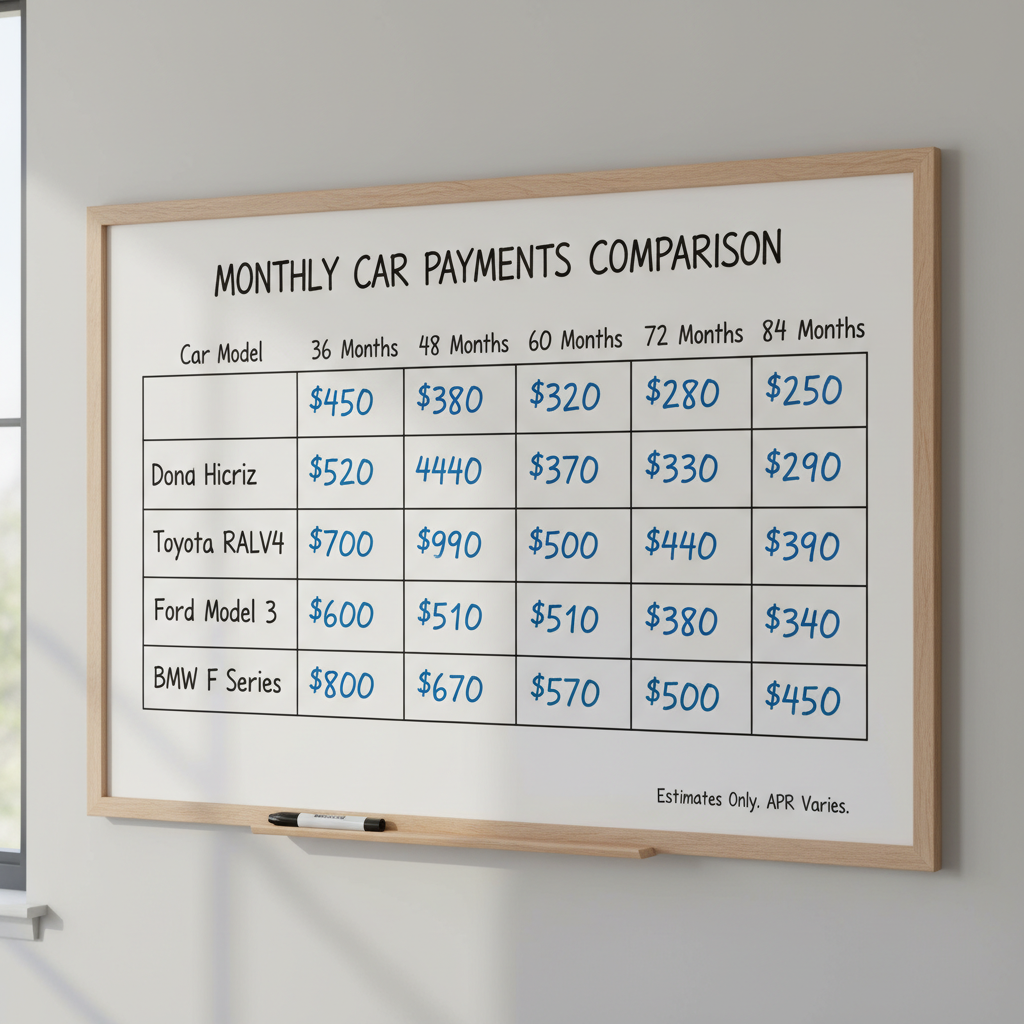How to Slash Your Car Payment Without Falling for the Long-Term Loan Trap
Car payments are one of the biggest monthly expenses for most Americans, and with new car prices still hovering near record highs, it’s tempting to stretch your loan out to 72 or even 84 months just to keep payments low. But here’s the truth: long-term loans might feel like a relief today, but they can cost you thousands in extra interest and leave you underwater on your car for years. The good news? You don’t need a risky, decade-long loan to get a low monthly payment. With the right strategies, you can lock in affordable payments while protecting your financial future.
Contents
- 1 Why Long-Term Loans Are Risky
- 2 Step 1: Choose the Right Car
- 3 Step 2: Maximize Your Down Payment
- 4 Step 3: Boost Your Credit Score
- 5 Step 4: Shop Around for the Best Loan
- 6 Step 5: Negotiate the Price and Fees
- 7 Step 6: Consider Leasing (If It Fits Your Lifestyle)
- 8 Step 7: Refinance If You Already Have a Loan
- 9 Expert Tips for Long-Term Savings
Why Long-Term Loans Are Risky
According to Experian’s 2024 State of the Automotive Finance Market report, the average new car loan term is now 72 months, with nearly 20% of new loans stretching to 84 months or longer. While these loans can reduce your monthly payment by hundreds of dollars, they come with major downsides:
- You’ll pay significantly more in interest over the life of the loan.
- You’re more likely to owe more than your car is worth (negative equity) for years.
- Longer loans increase the risk of financial strain if your income changes or your car needs expensive repairs.
Experts like those at Bankrate and Edmunds warn that long-term loans can trap buyers in a cycle of debt and make it harder to upgrade or sell your car later.

Step 1: Choose the Right Car
The most powerful way to lower your payment is to pick a car that fits your budget. In 2025, the average new car price is around $48,000, but there are plenty of affordable options that won’t break the bank.
Smart Picks for 2025
- 2025 Hyundai Elantra: Starting at $21,750, this compact sedan offers great value and low financing costs.
- 2025 Kia Forte: Priced from $21,290, the Forte is a reliable, budget-friendly choice.
- 2025 Toyota Corolla: Starting at $21,995, the Corolla is a top pick for low ownership costs.
- Used 2022 Honda Civic: Many are available for under $20,000, making them a smart way to save.
Choosing a car in this price range can cut your monthly payment by $150–$300 compared to a luxury or large SUV.
Step 2: Maximize Your Down Payment
A larger down payment is one of the most effective ways to lower your monthly payment and reduce interest costs. Aim for at least 20% of the car’s price. For a $25,000 car, that’s $5,000 down.
Example: On a $25,000 car with a 60-month loan at 5% interest, a $5,000 down payment cuts your monthly payment from $472 to $377—a savings of $95 per month.
If you can’t afford 20%, consider saving longer or buying a less expensive car. Even a $1,000–$2,000 down payment can make a noticeable difference.
Step 3: Boost Your Credit Score
Your credit score has a huge impact on your interest rate. In 2025, borrowers with excellent credit (720+) can qualify for rates as low as 4.5% on new cars, while those with fair credit (620–679) may pay 8% or more.
Before you shop, check your credit and take steps to improve it:
- Pay down credit card balances.
- Make all payments on time.
- Dispute any errors on your credit report.
Improving your score by just 50–100 points can save you hundreds of dollars in interest and lower your monthly payment.

Step 4: Shop Around for the Best Loan
Don’t just accept the dealer’s financing. Compare rates from banks, credit unions, and online lenders. In 2025, some of the best rates include:
- Ally Bank: 4.74% APR for new cars (excellent credit).
- Capital One: 4.99% APR for new cars (excellent credit).
- Local credit unions: Often offer rates 0.5–1% lower than national banks.
Getting pre-approved before you shop gives you leverage and helps you avoid high-pressure sales tactics.
Step 5: Negotiate the Price and Fees
Dealers often add fees that inflate your loan amount. Always ask for a breakdown of all charges and negotiate them down. Focus on the total out-the-door price, not just the monthly payment.
Use online tools like Edmunds True Market Value or Kelley Blue Book to know what the car should cost. If the dealer quotes a payment, ask for the loan terms and recalculate it yourself to avoid being misled.
Step 6: Consider Leasing (If It Fits Your Lifestyle)
Leasing can offer lower monthly payments than buying, but it’s not for everyone. In 2025, the average new car lease payment is $578, compared to $740 for a loan. Leasing is best if you:
- Drive less than 10,000–12,000 miles per year.
- Want a new car every few years.
- Don’t mind not owning the car.
Popular lease deals in 2025 include the 2025 Hyundai Elantra ($199/month for 36 months, $2,999 due at signing) and the 2025 Kia Forte ($189/month for 36 months, $2,499 due at signing).
Step 7: Refinance If You Already Have a Loan
If you’re stuck with a high-interest loan, refinancing can lower your payment. In 2025, many lenders offer refinancing rates as low as 4.5% for borrowers with good credit. Refinancing can save you hundreds per year and help you pay off your car faster.

Expert Tips for Long-Term Savings
- Use the 20/4/10 rule: 20% down, 4-year loan, no more than 10% of your monthly income on transportation.
- Make biweekly payments to pay off your loan faster and save on interest.
- Round up your payment to pay down the principal faster.
By following these steps, you can get a low monthly car payment without the risks of a long-term loan. The key is to be proactive, shop smart, and avoid the temptation of stretching your loan out just to save a few dollars each month. Your future self will thank you.

